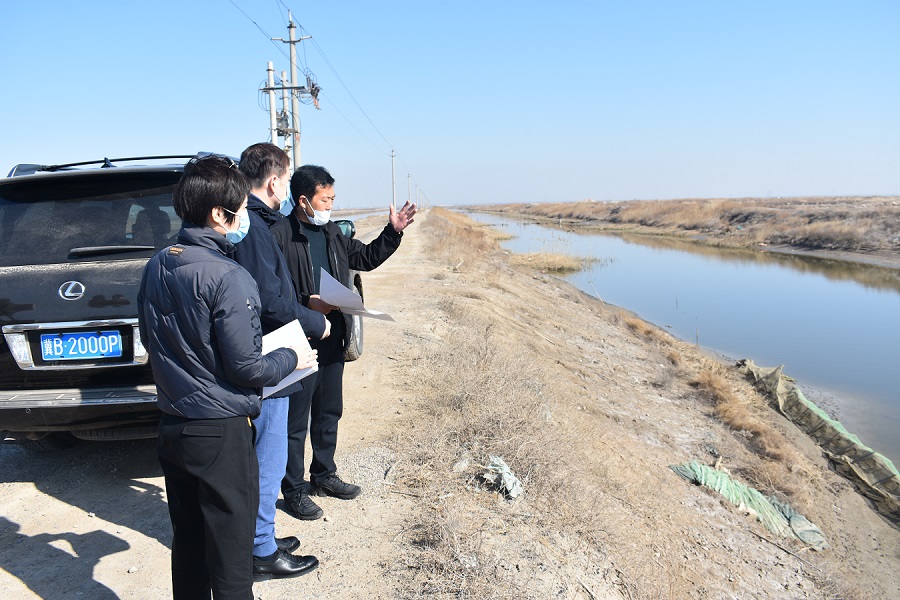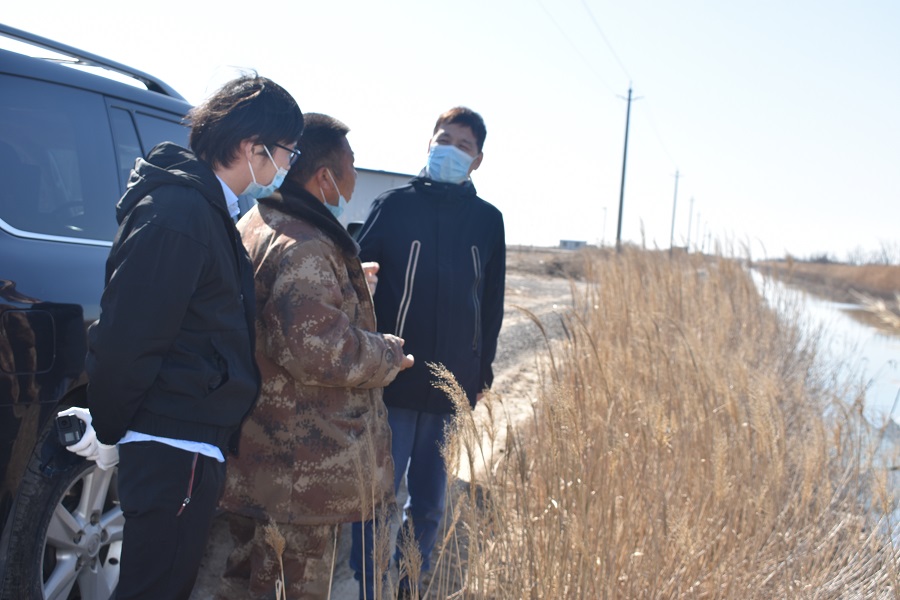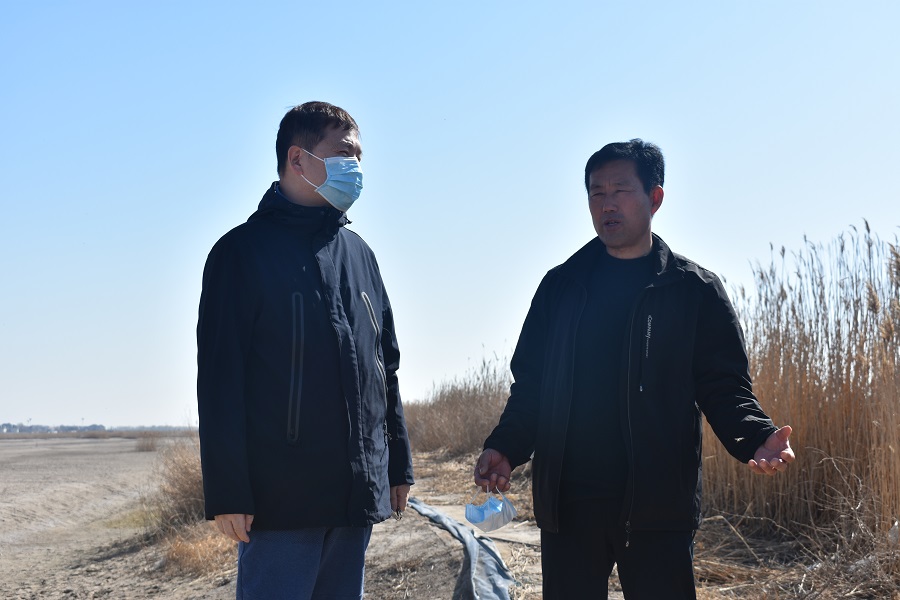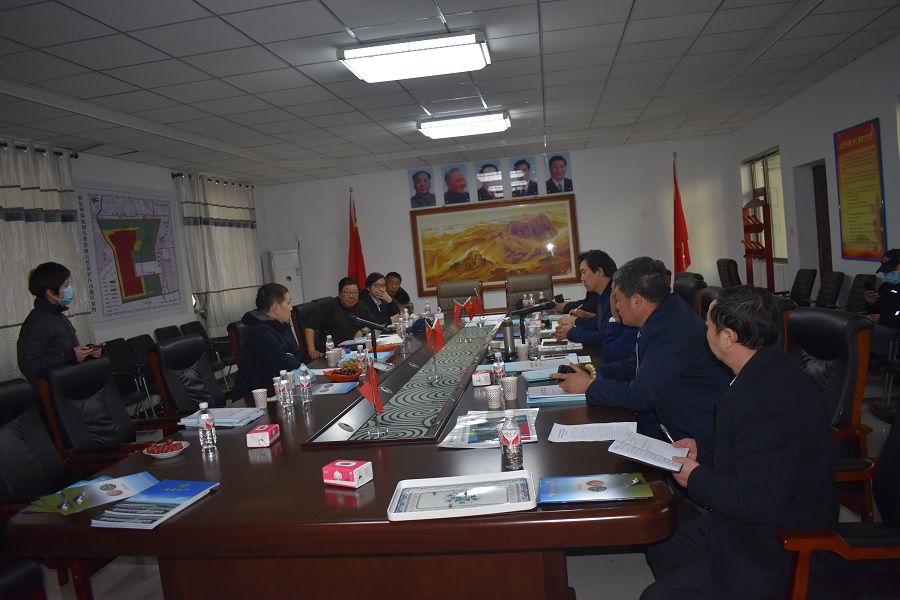In spring and March, most parts of the country have already blossomed in spring. Although the national battle against the COVID-19 epidemic has not yet ended, migratory birds of the shorebirds type will return to the north again as the climate changes. Caofeidian Wetland and Migratory Bird Reserve, the largest wetland reserve in North China, with important international protection significance, will once again welcome a large number of migratory birds of the shorebirds.
On March 22, in order to promote the scientific management and protection of Caofeidian Wetland, Dr. Zhou Jinfeng, Secretary-General of China Biodiversity Conservation and Green Development Foundation (CBCGDF), Mr. Tian Zhiwei, director of CBCGDF Community Conservation Area for waterfowl (CCAfa), Mr. Wang Jianmin, director of CCA for relict gull and others rushed to Caofeidian Wetland in the weekend morning to conduct field research and inspection.
On the sunny day, many people drove into the fishing area on the side of a ditch in the core of the wetland reserve. At the junction of Farm No. 7 and Farm No. 11, the team learned in detail about the use of brine farming there. The brine pond has been filled with water this season, and the nearby ponds that have been prepared to invite tenders from the community to contract, there is no drop of water, so that the bottom of the pond has sunk a lot of big holes.
"There are many dried-up ponds like this. There are at least 3-4 million mu in the protected area. In the past year, water has been irrigated this season, and the birds have also come. However, the dry state is anxious." According to local personnel, these dried-up ponds cannot store water, which is a damage to the wetland environment itself, and is even more detrimental to the waders who are about to breed in this wetland.
Later, near No. 7 Farm, the team of Dr. Zhou also carefully examined the local habitat and the use of land. Because it is located at the junction of salt water and fresh water, it is the place where the Oriental white storks like to gather, but there are still such large dry ponds. "In the past, Oriental white storks like to come here because they can find enough food in these fishponds, and at the same time, they ran to freshwater fishponds to rest after they were full." Director Tian Zhiwei was also anxious about the large dry ponds now.
This situation is also the same in the area between the southwestern corner of the Nanbao salt field and the reserve. In previous years, this area was the region with the richest bird resources in the Caofeidian Wetland. Where the core area has been irrigated, it is clear that more wild birds of gulls and ducks are hovering above.
In the afternoon of the same day, Dr. Zhou continued the discussion with the staff of Caofeidian Wetland's largest breeding company, Caofeidian Bird and Wetland Management Office despite the fatigue. It is understood that this company's implementation of the "Wetland Ecological Conservation System and Water Bird Habitat Construction Experiment Plan" (hereinafter referred to as the "Plan") in this protected area is currently in its second year of implementation. This project makes full use of the water circulation system of freshwater, seawater, and brine farming, and has conducted fruitful conservation experiments around the value of artemia in purifying water and recycling the food chain.
Director Li Xuejun of the Wetland Management Office introduced that the management office was established in 2007. After the State launched the Green Shield operation from 2017 to 2019, both the national and local governments have increased the protection of wetlands. Currently, the reserve is implementing a five-year plan of "returning the wetland to its natural state" according to the Hebei provincial wetland plan. Since the spring of this year, the preliminary opinion of the district government is that all the fish ponds in the core area of the reserve are to be recovered, and the original core area and buffer zone are to be strictly closed for management, while the original experimental area is under general control. In response to the dry fish ponds that can be found everywhere in the core area, Director Li said: Because the local wetland water is used in a round irrigation system, it has been coordinated so that it can be replenished by the end of March.
During the field trip and after fully listening to the opinions of everyone, Dr. Zhou said: "We are investigating today to listen to everyone's opinions in all aspects. We hope to understand the situation in detail and seek truth from facts. On the basis of this, issues such as contracting once a year are a problem. Another example is how to accept social organizations and better monitor the scientific management and protection of wetlands.” Dr. Zhou also emphasized that the purpose of this investigation is only to protect the wetland resources and do a good job of protecting them. China Biodiversity Conservation and Green Development Foundation (CBCGDF) very much hopes to work with everyone to find a way to jointly promote this extremely precious wetland and its long-term harmonious development in terms of human and ecology. It is for everyone trying to build Caofeidian Wetland into a new ecological civilization demonstration point.





(Photo credit: CBCGDF)
Original Chinese article:
http://www.cbcgdf.org/NewsShow/4854/11775.html
By / Maggie
